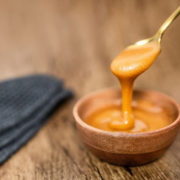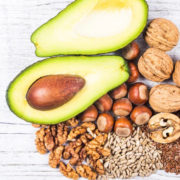Mackerel can be canned in water, salt water, tomato sauce, olive oil and other vegetable oils. Of course, fresh fish taste much better when compared with canned fish.
As lean fish protein source, many people prefer mackerel canned in salt water, while mackerel canned in various oils or tomato sauce they generally avoid. Mackerel canned in olive oil taste much better than mackerel canned in salt water, but it is also much more caloric – single tablespoon of olive oil has around 15g – 135 kcal. To reduce amounts of fats in such canned mackerel, many people put canned fish in strainer and wash it using plenty of fresh lemon juice. On the other hand, those who are worried about sodium levels should choose mackerel canned in plain water – it can be almost tasteless – just taste of fish, but those cans contain nothing but the fish meat and plain water.
Content of mercury in canned mackerel is relatively low, especially when compared with mercury levels of large predatory species like tuna or marlin. Some mackerel species, like king mackerel can have moderate levels of cadmium, mercury and other heavy metals and pollutants.
For example, FDA’s (Food and Drug Administration) reports from 1990-2010, state that levels of mercury in swordfish:
-
0.995 PPM (parts per million) on average
-
3.220 PPM maximum
This is statistics for 636 samples.
Statistics for mercury in King mackerel:
-
0.730 PPM on average
-
1.670 PPM maximum
This is statistics for 213 samples.
Levels of mercury in Atlantic mackerel:
-
0.050 PPM on average
-
0.160 PPM maximum
This is statistics for 80 samples.
According to NRDC (Natural Resources Defense Council) and FDA, children, pregnant woman and those women trying to get pregnant should eat no more than:
-
King mackerel – generally this kind of mackerel should be avoided,
-
Mackerel (Spanish, Gulf) – consume no more than three 180g (6 oz.) servings per month,
-
Mackerel (North Atlantic) – consume no more than two 180g (6 oz.) servings per week.
Other people can safely follow these recommendations – after all, what is safe for children and pregnant women, it is also safe for others. Mackerel from much cleaner seas (some parts of Mediterranean, for example) can be eaten more often – it is very important to read the labels and follow the recommendation guidelines regarding mercury levels in the fish.
Various canned mackerel recipes enable every person to enjoy this type of food avoiding boredom. Generally, when planning such meals, one should try to consume some healthy fiber source (leafy or green vegetables, salads, whole grain bread etc.) with canned mackerel – such foods are very voluminous when compared to usable calories that body can digest. Also, they are very low on simple carbs and rich in complex carbs and digestive fibers – they are digested slowly and such meals supply the body with more or less constant flow of macronutrients avoiding strong rise of blood sugar and insulin spikes.
If you are hard gainer and you want to gain weight, preferably muscles, then add some source of simpler carbs like potato salad, sweet potato, brown rice etc. to increase daily amount of calories – according to your dieting plan. Such meals provide more calories and are easier and faster to digest.
Although exact nutritional values depend on mackerel specie, fishing grounds, seasons etc., canned mackerel is great source of fish protein, fat soluble vitamins (like vitamin D), minerals and healthy fats and it should be part of healthy diet of anybody wanting to become and stay fit. Just be careful about what mackerel specie you are consuming …














